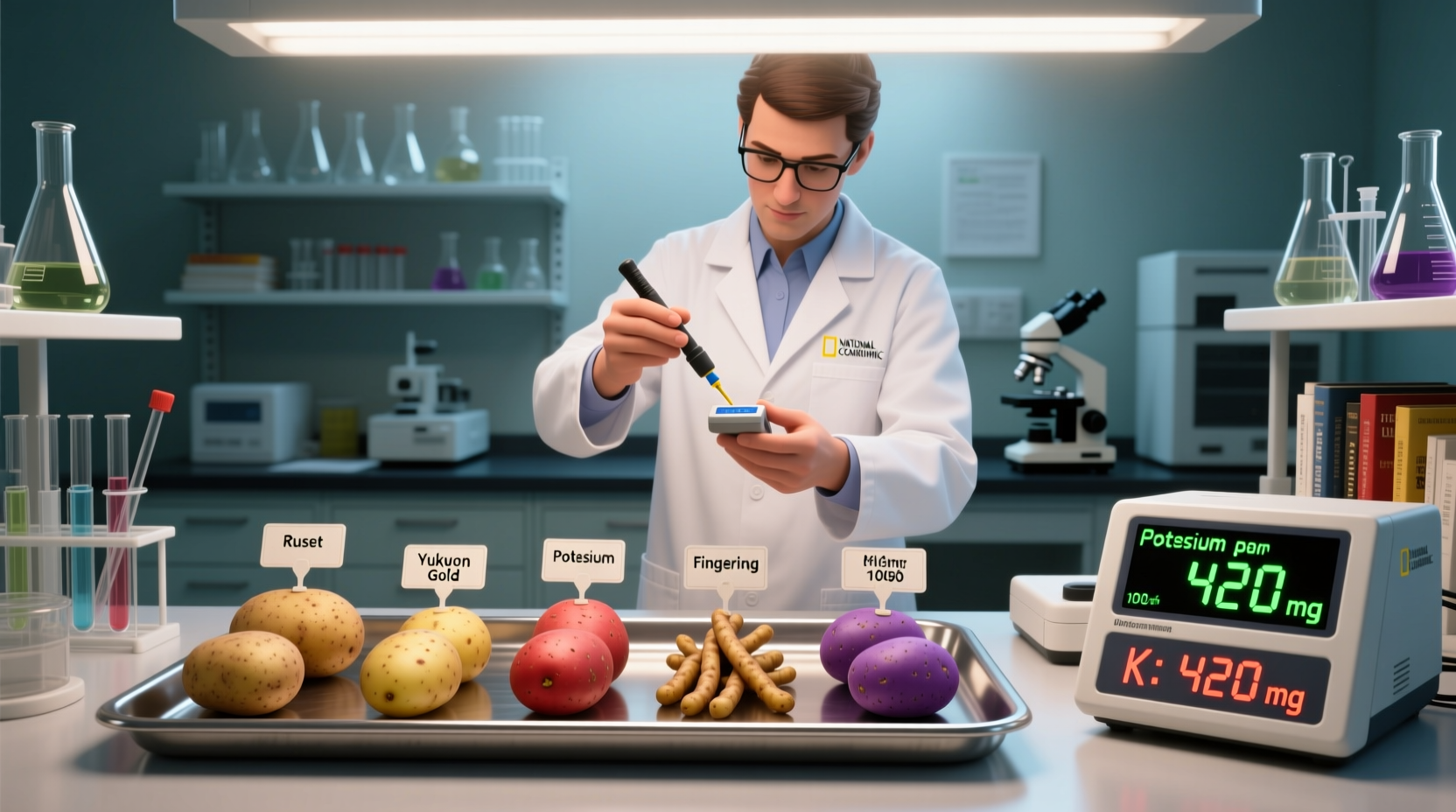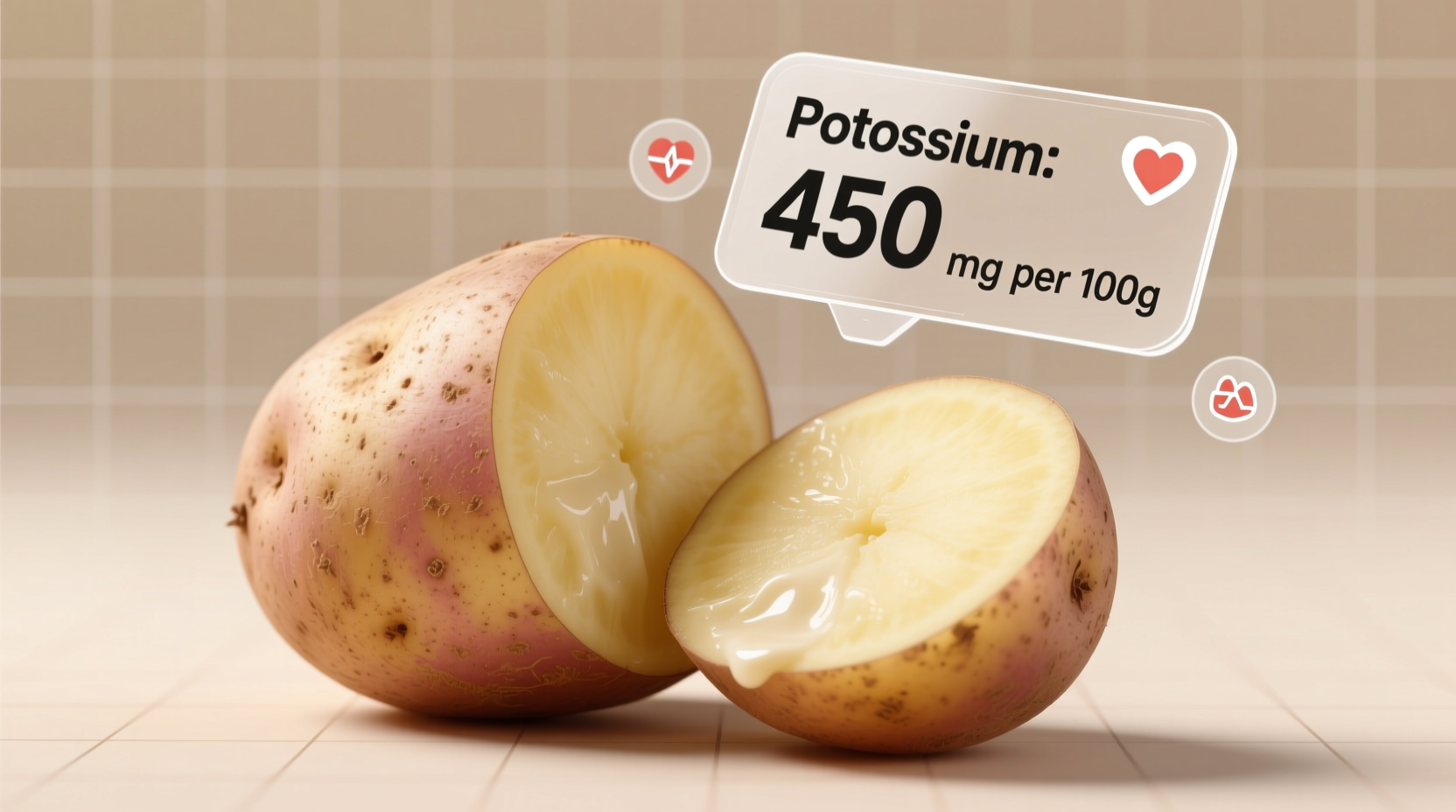One medium-sized russet potato (173g) contains approximately 926 milligrams of potassium, which is about 20% of the recommended daily value. Baked potatoes with skin provide even more—up to 1,600-1,700mg per medium potato—making them an excellent natural source of this essential mineral.
Discover exactly how much potassium you're getting from potatoes, why this matters for your health, and how preparation methods dramatically affect nutrient retention. Whether you're managing dietary needs or simply optimizing your nutrition, this guide delivers precise, science-backed information you can trust.
Why Potassium Matters for Your Health
Potassium plays a critical role in maintaining proper heart function, muscle contractions, and fluid balance. This essential mineral helps counteract sodium's effects, potentially lowering blood pressure and reducing cardiovascular risks. The National Academies of Sciences, Engineering, and Medicine recommends adults consume 2,600mg (women) to 3,400mg (men) daily.
For individuals monitoring their potassium intake—whether due to kidney conditions or athletic performance goals—understanding precise nutrient content becomes crucial. Potatoes rank among the top vegetable sources of potassium, but amounts vary significantly based on variety, size, and preparation.
Potassium Content Across Potato Varieties
Not all potatoes deliver the same potassium punch. The USDA FoodData Central database provides precise measurements for different types:
| Potato Type | Size | Potassium (mg) | % Daily Value |
|---|---|---|---|
| Russet (baked with skin) | Medium (173g) | 1,600-1,700 | 34-36% |
| Russet (boiled without skin) | Medium (150g) | 610-650 | 13-14% |
| Yukon Gold (baked) | Medium (150g) | 900-950 | 19-20% |
| Red Potato (boiled) | Medium (150g) | 550-600 | 12-13% |
| Sweet Potato (baked) | Medium (130g) | 438-475 | 9-10% |
Source: USDA FoodData Central
How Cooking Methods Impact Potassium Levels
Your preparation technique significantly affects potassium retention. When you boil potatoes without their skin, up to 50% of potassium leaches into the cooking water. This explains why boiled potatoes contain substantially less potassium than baked ones.
Eating potatoes with their skin provides maximum nutrient retention. The skin contains concentrated fiber and nutrients, including potassium. For those monitoring potassium intake, boiling potatoes and discarding the water can reduce potassium content by nearly half—a valuable technique for kidney disease patients following medical advice.

Practical Applications for Different Dietary Needs
Understanding potato potassium content helps tailor your diet to specific health goals:
- For heart health: Pair baked potatoes with potassium-rich toppings like avocado or spinach to boost cardiovascular benefits
- For kidney health: Consult your healthcare provider about appropriate portions; boiling potatoes and discarding water reduces potassium content
- For athletes: Potatoes provide both potassium and carbohydrates, making them ideal for post-workout recovery meals
- For weight management: Potatoes' high fiber content promotes satiety while delivering essential nutrients
The Centers for Disease Control and Prevention notes that most Americans don't consume enough potassium-rich foods. Incorporating potatoes as part of a balanced diet can help bridge this nutritional gap while providing versatile culinary options.
Maximizing Nutritional Benefits While Minimizing Risks
Potatoes offer more than just potassium—they're rich in vitamin C, vitamin B6, and dietary fiber. However, preparation matters. Frying potatoes adds significant fat and calories while providing minimal additional nutritional value.
For optimal health benefits, choose baking, roasting, or steaming over frying. Pair potatoes with other potassium-rich foods like beans, leafy greens, and bananas to create balanced meals that support overall cardiovascular health.
Common Questions About Potassium in Potatoes
Understanding these frequently asked questions helps make informed dietary choices based on your individual health needs.











 浙公网安备
33010002000092号
浙公网安备
33010002000092号 浙B2-20120091-4
浙B2-20120091-4